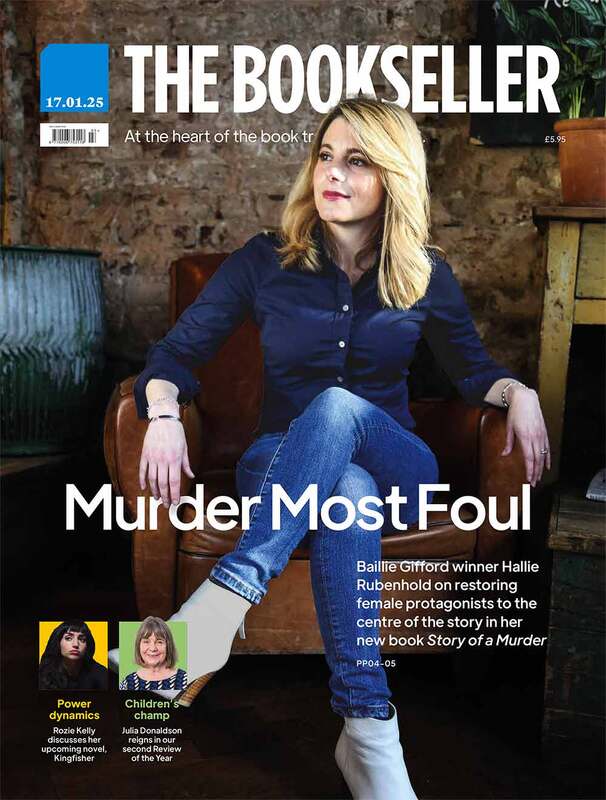You are viewing your 1 free article this month. Login to read more articles.
Does the dog die at the end? The case for book content warnings
Are content warnings an essential part of publishing’s duty of care – or a shortcut to more banned books?
My mother will immediately stop reading a book if there is a dog that dies. She has abandoned many good books because she can’t possibly think about a pet passing away. She will not touch Sigrid Nunez’s work after a run in with The Friend. Although her own desire for animal-themed content warnings seems benign, there is a much larger conversation to be had about what readers should tolerate without prior knowledge. Content warnings for emotionally distressing topics are commonplace at the cinema, so what makes books any different?
To spoil a book is to give away the ending, or in the case of thriller, to reveal a plot twist or name the killer. The common argument against the inclusion of content warnings in books is that the warnings for potential topics such as sexual violence or abuse will give away a key story line and put off a reader from reading the book in its entirety – although many disagree. Lizzie Huxley Jones, author, says: “The idea that they can ruin the piece of art is strange. Art is much more than spoilers or twists, we can enjoy things when we know things about that, we can enjoy things better sometimes if we are well informed”.
The concept of content warnings is often rebuked in the same way as sensitivity readers, as an unnecessary burden appeasing a snowflake generation. However they are already in use in some genres, without much pushback.
Although it is impossible to list all the ways in which a book may be difficult for someone to read as those warnings are as subjective as the text themselves, we can suggest a somewhat universal list, similar to the top twelve allergens we see marked on food labels, that could be used to alert the reader to topics such as sexual violence, child abuse, death by suicide, baby loss etc. Topics that are considered difficult to view in TV shows and cinema could be considered equally triggering in books.
Huxley Jones says it’s vital that they are included at the start of the process. As an author who also reads a lot of proof copies, they have been confronted by difficult scenes without any warning: “I was upset by a book pitched as a ‘dark thriller’, but went much further and contained on page descriptions of child sex abuse.” They also said it should be an important way for the publishing community to support each other: “It is part of cross-industry care; we don’t know every person’s past, and we need to be careful”.
The concept of content warnings is often rebuked in the same way as sensitivity readers, as an unnecessary burden appeasing a snowflake generation. However they are already in use in some genres, without much pushback. Young Adult could be considered one of the more inclusive genres, pushing for better diversity amongst characters and authors alike, and it is pioneering content warnings. Ace of Spades by Faridah Àbíké-Íyímídé makes use of them – and that’s a New York Times bestseller, contradicting the argument that warnings put off readers. Alongside YA, indie publishing is ahead of the game. Tell Me I’m Worthless by Alison Rumfitt, published by Cipher Press, warns readers of its explicit rape scenes and has been a breakout success on bookish social media.
Perhaps genre plays an important role in when content warnings are used because readers expect certain things in certain types of books. Anna Burtt, head of writing events at Jericho Writers and former publisher says: “I think it’s necessary, but only for books where it may surprise the reader. I wouldn’t say it’s necessary if it’s a trope of the genre”. Although that raises questions about why, for example, sexual violence is so commonplace in thrillers. It does show us readers can often deduct what may be contained in a book before they start reading. However, as Huxley Jones’ point raises, to call something intense and then feature descriptions of harming children, are two quite different things. Pema Monagham, who works in small press publishing, describes warnings as not personally useful to her, as they lack context of the content: “they don’t help me get a sense of the way in which a topic will be treated, which, for me at least, is the most important thing”.
Although all publishing staff interviewed for this piece were in favour of warnings in some way, and foresaw no issues in incorporating them into the book making process, readers Stateside have predicted their misuse. Book bans have made the news in recent months, with titles containing LGBTQIA+ themes, stories exploring racism and even books attempting to tell tough parts of history having all been taken off school and library shelves. Although this might seem like an American problem, a British religious school also just banned a gay author from attending a visit. It is not unimaginable, then, to foresee content warnings as a dangerous way for a story to be arbitrarily categorised and rejected. If a book is marked as talking about a racial attack or sexual assault, some adults might deem those books inappropriate for teen readers when really they’re sensitively bringing essential perspectives and debates to growing minds.
It seems there is no easy solution to a blanket inclusion of content warnings across all books, but the benefits do seem to outweigh the risk, particularly with themes universally considered hard to read or hateful. Publishing industry, it’s your move.
















